A sales plan is used by businesses and companies to document target sales and outline sales strategies required to realize the set sales objectives.
Business success can be directly attributed to good planning within the organization.
EXAMPLE
A strategic sales plan is usually designed to assist the company in driving sales to facilitate growth in the company’s revenue.
It is a month-to-month plan. The plan will cover the objectives, target audience/customers, high-level sales and marketing tactics, and potential obstacles. It also outlines the roles and responsibilities of the sales team members.
Free Sales Plan Templates
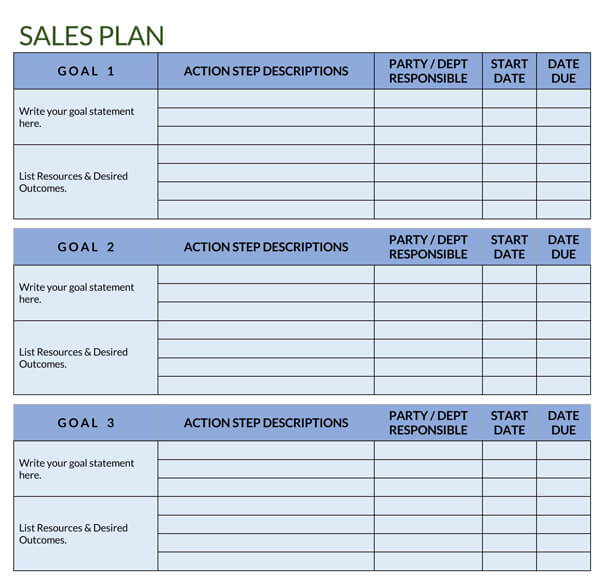
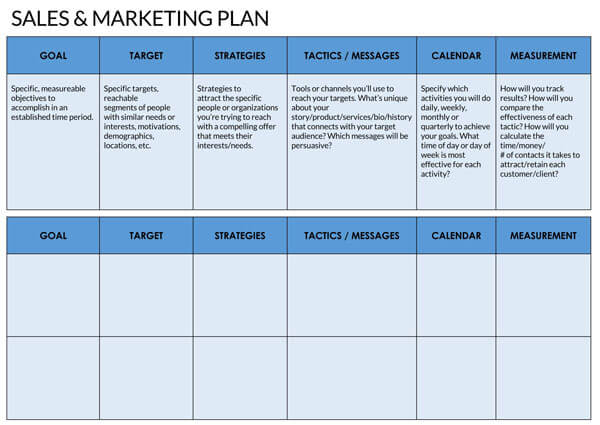
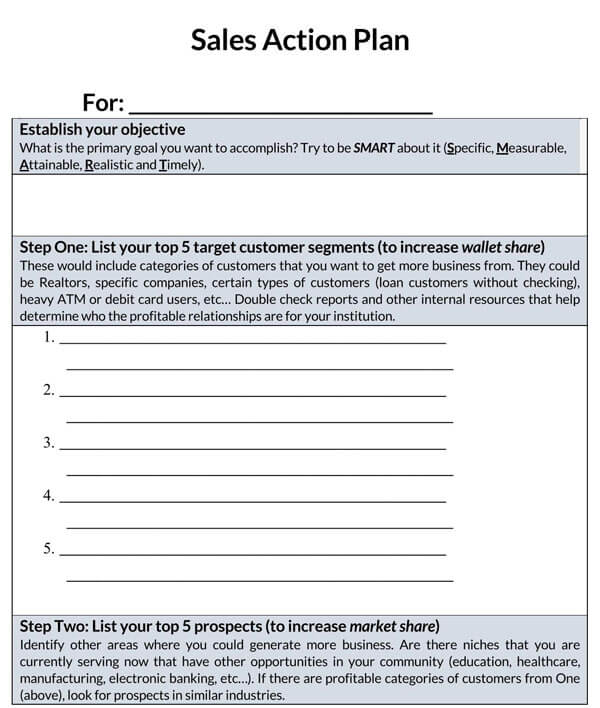
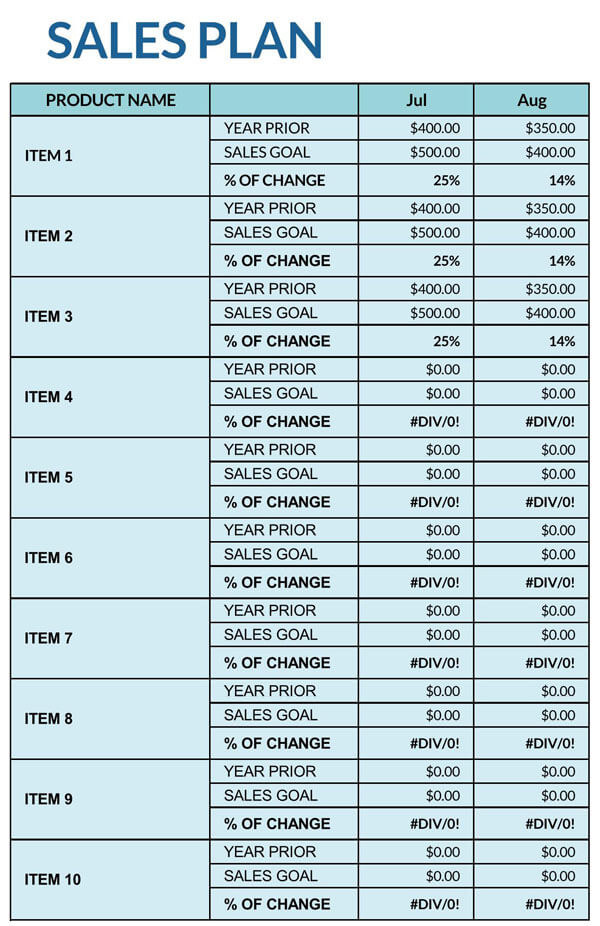
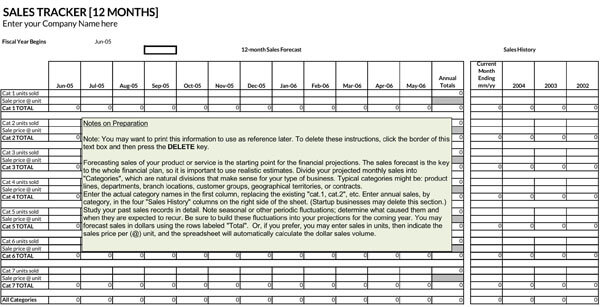
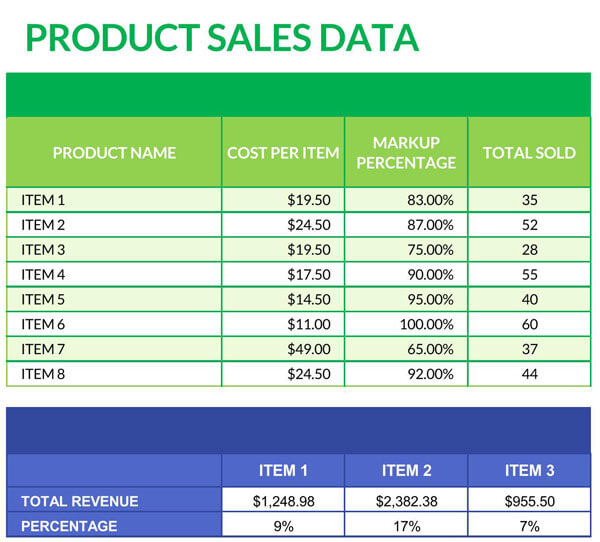
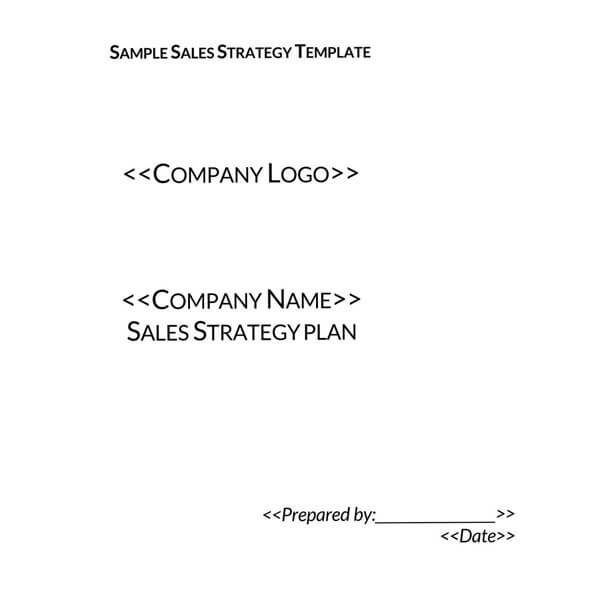
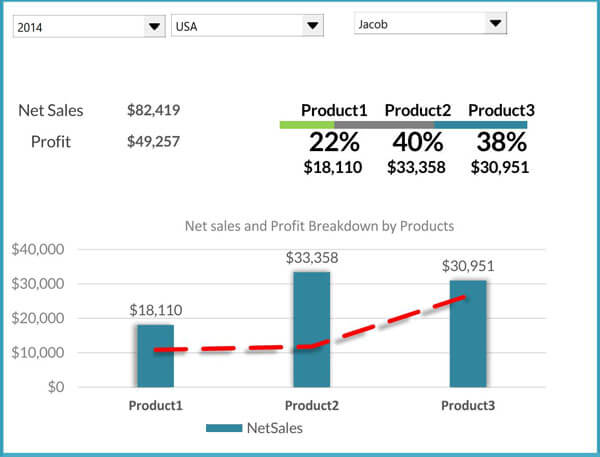
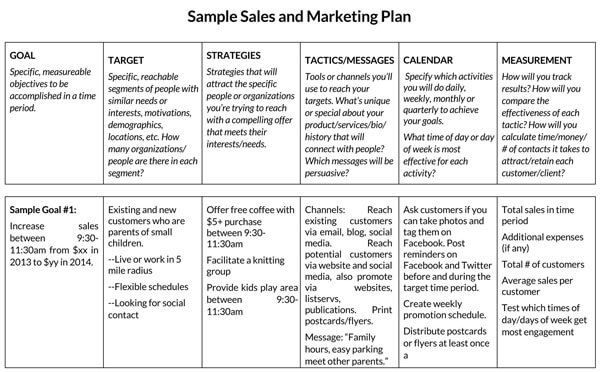
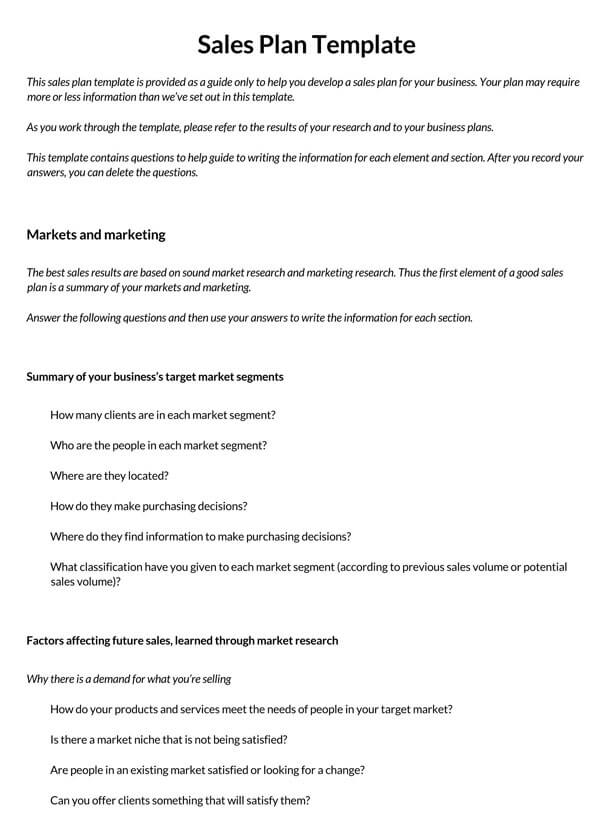

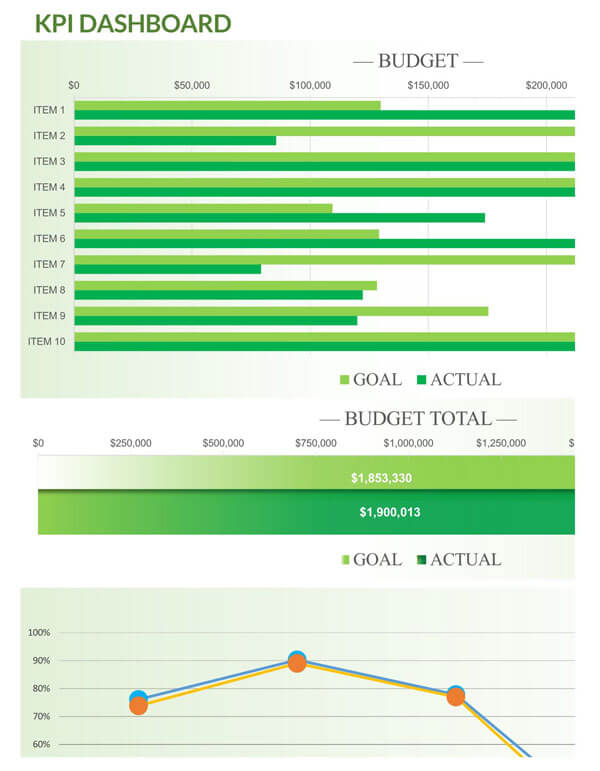

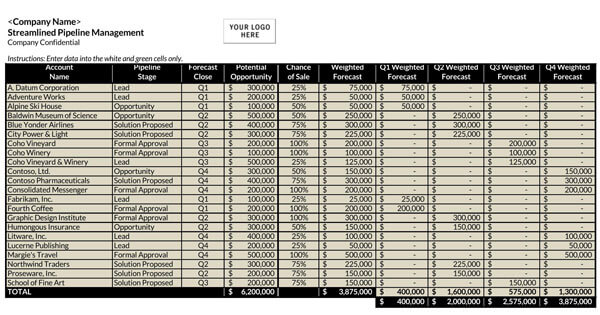
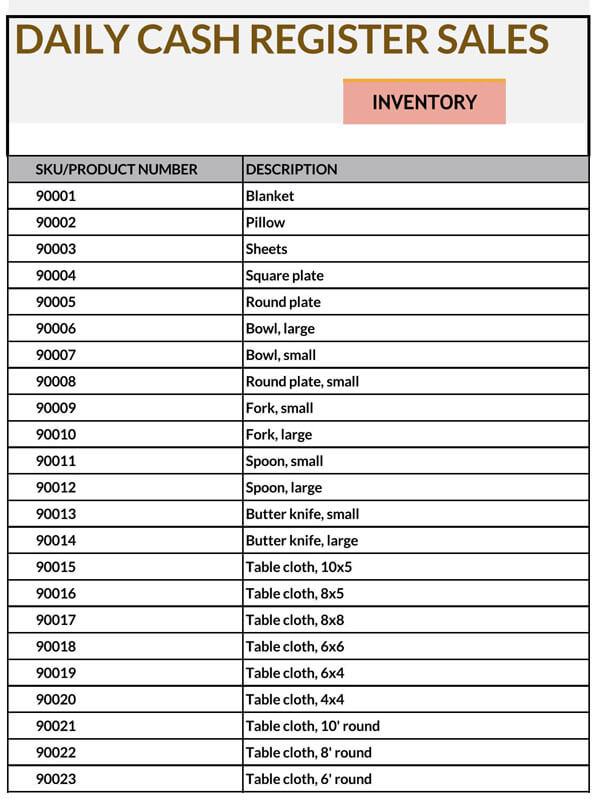
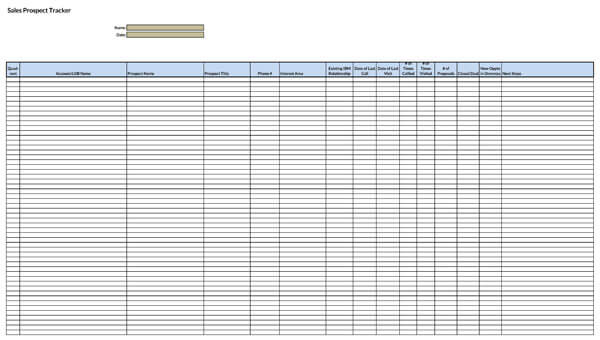
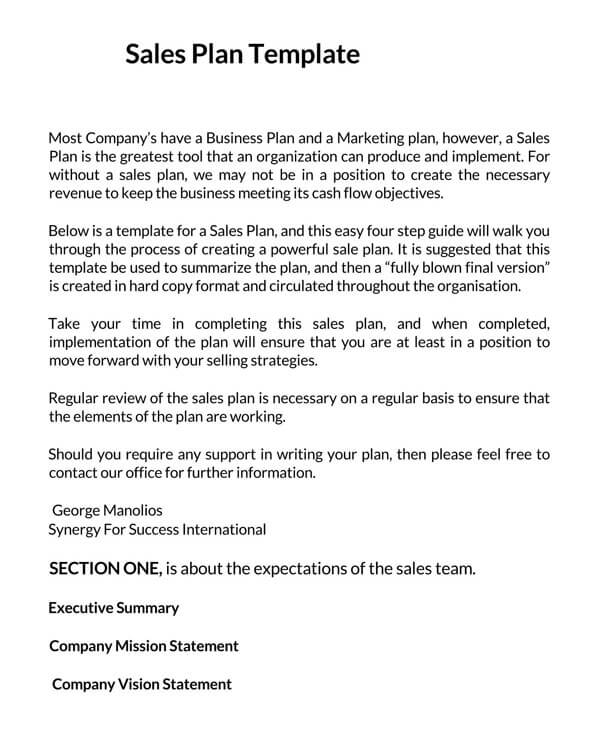
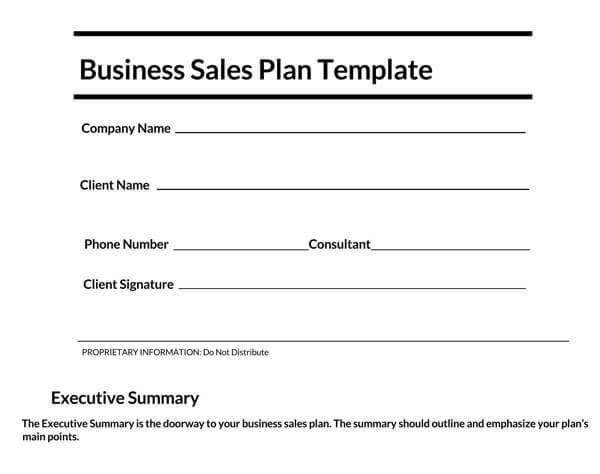
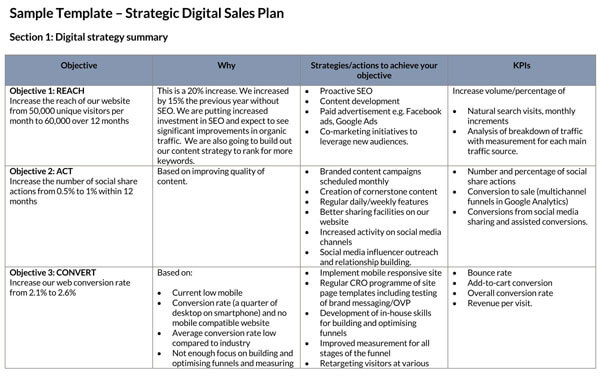
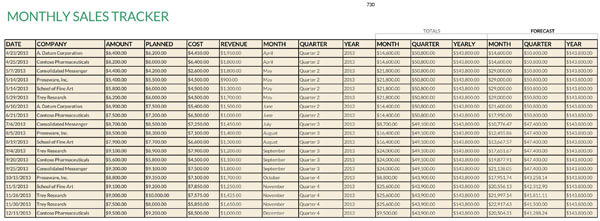
Components of a Sales Plan
Developing a sales plan that impacts sales in a company should be the primary objective. The set goals should be specific, realistic, measurable, and attainable. Generally, a plan can be categorized into market and customer research, sales forecasting and goal setting, and prospecting and partnerships.
Below are the fundamental components of a plan.
Executive summary and scope
An executive summary is a brief outline of the contents of the sales plan. The scope is the depth that the plan shall cover in terms of sales. An executive summary and scope introduce the reader to what they should expect to find in the document by concisely discussing the sales goals and strategies and stating the specific period in which the plan is to be implemented.
Target customers
Target customers are the people the company aims to cater to with its products and services. Identifying the target customers ensures the company may not spend time and resources on the wrong customers who would not buy their products. Target customers should be defined by any traits common amongst most existing and projected customers – customer profile.
Revenue targets
A good sales plan will have an end goal. This will be either of the two things, sales or customers. These two factors influence the revenue generated by a business. Therefore, the plan should have target sales that are to be realized at different stages of the strategic plan implementation and after a specified period, say one year or three years. After that, revenue will usually mean profits for the company.
Review of prior period performance
Before forecasting, it is essential to check previous sales. Previous sales help a company avoid relying on wishful thinking when making projections, and thus realistic goals can be set. The plan should include data and decisions from the previous recording period used to develop the new figures and set goals. Previous mistakes should also be noted.
Pricing and promotions
The plan should outline the pricing of products and any promotional campaigns the company runs to keep existing customers and attract new ones. The pricing should reflect the value of the product or service conveyed to the customers.
Deadlines and directly responsible individuals (DRIs)
The plan should outline any deadlines that should be met and the individuals or teams responsible for making this happen. Setting deadlines ensures each goal is realized on time so as the plan and the end goal can be realized. In addition, it helps the company actualize the plan (deliverables) within the set period. Finally, assigning individuals or teams specific roles and responsibilities ensures the order is maintained and enhances accountability.
Action plan for teams and individuals
The plan should have a quantifiable action of what is to be done and the specific goals they should achieve. The action plan should detail the actions/activities that should be done to realize the set goals. An action plan is fundamentally a summary of the company’s game plan (strategy).
Resources
Every output requires an input. The plan should outline what is needed to achieve the objectives of the strategy/plan. Resources are tools that the sales team will utilize in the process of implementing the plan. Resources include labor (sales team, specialists), technology (software, online ads), stationery (banners, flyers), and compensation for the team. Including the resources in the plan ensures the plan balances costs and sales to avoid a situation where the sales costs exceed sales revenue reducing profit margins to an unsustainable level.
Market and industry conditions
Market and industry conditions are essential factors about the company’s sector that should be considered. Market conditions will determine the position of the company as a business and a competitor. Regarding market conditions, the plan will indicate the niche in the market (size of market, demand for product, opportunities), key competitors (strengths and weaknesses), market trends that directly influence sales performance, government policies, and social behaviors of customer decisions.
Customer segments
The plan should show the target customers’ demographics. Understanding the different customer segments influences the approach to be taken to reach out to them. Standard customer segments are referrals, renewals, new prospects, upsells, cross-sells, and new segments.
Performance benchmarks & monitoring
A measurable sales plan implies that the plan’s performance can be quantified. The plan must indicate the set benchmarks and metrics used to assess performance and progress. Monitoring helps identify skews in the plan, and thus timely corrective measures can be implemented. The plan must also indicate which systems and processes will be used to monitor the mentioned metrics.
How to Create a Sales Plan
Each part of a sales plan serves a specific purpose towards the plan’s end goal. Creating an effective plan will involve an in-depth assessment of the sales of a company.
The steps below can be used to come up with an up to standard plan.
Mission and background
First and foremost, the document ought to state the company’s mission and vision. In addition, it should provide a background of the company by providing a summary of its history. Finally, the overall goals or objectives of the strategic plan should also be declared.
SWOT analysis
Secondly, a SWOT analysis on the sales team should be carried out to determine where they are strong (strengths), opportunities, and where they can improve on (weaknesses and threats). These strengths, weaknesses, threats, and opportunities should then be stated in the document.
Team and their roles
Thirdly, indicate the individuals making up the sales team and each individual’s roles in the team. The team must reflect the current and projected number of team members. For projected members, indicate their job title, headcount, and when they are expected to join the team.
Target market
Next, indicate the company’s target market. First, the document should show the target market’s demographic. Then, transparent information to show the growth and projections of the size and diversity of the customers should be given.
Marketing strategy & personal tactics
After indicating the target market, include a sales strategy and the tactics adopted to achieve the set sales goals. Tactics can revolve around pricing products and services and promotion campaigns. However, the tactics proposed must be realistic and based on field data and measurable by specified benchmarks and metrics.
Tools, software, and resources
Then include the tools and resources such as training, software, sales budget, and documentation that the sales team will require to execute the laid-out strategy. Again, be descriptive as possible for clarity.
Positioning
The following section should state the company’s position in comparison to its competitors by listing its competitors. Positions can also be described in terms of technology advancement, market trends, pricing, etc. this section should discuss how these factors influence the company’s sales.
Prospecting strategy
The prospecting strategy should then follow. First, the plan should illustrate the strategies to be adopted to acquire inbound and outbound sales. Inbound sales are sales initiated by the customer, for instance, when enquiring about a particular product or service. Outbound sales are generated from the prospecting efforts of the company,
EXAMPLE
Contacting customers who have not expressed interest in a product or service.
Sales objectives
Then state the company’s sales goals. Sales objectives are vital considerations in business growth, and as a result, specificity is essential in this section. Often, sales goals are in terms of revenue.
EXAMPLE
A $50 million turnover.
Alternatively, sales goals can be volume-based such as 1000 sales. Factors to consider are pricing, resources, total addressable market (TAM), and market penetration. Although a company can have more than one sales goal, list them all in order of priority.
Ensure to include the timeline and the DRI,
EXAMPLE
Shop A to increase sales by 1500 which will amount to $300,000 in the 1st Quarter of 2021 (January to March). Harry’s team will be in charge and will report to the Head office.
Action plan
After, the plan should state the action plan to be followed by the sales team. The action plan should have broken down steps that outline how the sales goals/objectives will be achieved.
EXAMPLE
Goal: Increase market share from 20% to 35%, equivalent to 10,000 sales.
- Offer a 10% discount for purchase orders above ten items.
- Give away coupons for all purchases every Friday.
Budget
Lastly, provide a budget for the plan. The budget should outline the costs associated with the plan, such as salary and commission of the sales team, sales tools and resources, travel costs, food, sales training, and team bonding activities. A comparison should be drawn between the associated costs and projected revenue for a more wholesome budget. Ordinarily, it should include sales forecasting, anticipated expenses, and miscellaneous.
Sales Plan Examples
A company can decide to use one of the different plans available that best suits their needs. Below are examples of the types of sales plans.
30-60-90-Day sales plan
It is time-based and used by a new salesperson to bring them up to speed about the sales in a company within their first three months. It is segmented into three timeframes.
- Day 1-30: In the first thirty days, the new salesperson gets to learn the intricacies of the company in terms of the customers, products, processes, procedures, and competition.
- Day 31-60: A new action plan is developed by carefully assessing the existing processes while identifying necessary changes incorporated into the new action plan.
- Day 61-90: The new action plan is optimized and improved before it is implemented.
Sales plan for specific sales
A company can also use a plan that addresses a specific customer or tactic towards improving sales – one sales goal or task. In addition, the company can focus on a specific sales tactic.
EXAMPLE
E-mail follow-up frequency, etc.
Marketing-alignment sales plan
A company can create this plan to align marketing and sales to foster sales growth. Primarily, it focuses on establishing ideal customer profiles and customer persona to align marketing strategies with sales’ product pitches.
Territory sales plan
These plans are meant for sales plans limited to a specified geo-location or region. The goals of a good territory sales plan usually are to increase productivity, increase sales, improve customer coverage, reduce operational costs and improve the customer-client relationship.
Business development strategic sales plan
This plan is meant to attract new business opportunities by fostering networking with other companies, events sponsorship, and outreach.
Market expansion plan
A market expansion plan is developed when a company intends to expand into a new market in terms of a new target market or geographical area. It details the list of activities and target metrics the company intends to use for this expansion.
Sales training plan
A sales strategy will sometimes involve training programs for the sales team to facilitate the implementation of the action plan. A sales training plan outlines different sales training programs to be executed and can be broken down to address different positions in the company, sales records, assets, etc.
New product sales plan
When a company launches a new product, this plan is the go-to guide. A new product sales plan analyzes the competition, the brand positioning of the company, secure channel partners for the new product, and synthesizes a sales strategy to be adopted to ensure the new product becomes a revenue-generating source.
Sales budget plan
A sales budget plan forecasts sales, expenses, and revenue. A sales budget plan includes marketing campaigns, sales staff, tools, and other resources to raise the target revenue. It should accommodate the predicted sales the team is predicted to sell in a given period, the expenses they are expected to incur in that same period, and unforeseen expenses.
Tips for an Effective Sales Plan
To ensure that the plan effectively communicates to the intended audience (sales team and shareholders), certain things can be considered when preparing one.
They include:
Requires in-depth and up-to-date research
The plan should reflect a deep and up-to-date understanding of data and market trends associated with the niche, industry, and target customers. Markets and customers are ever-changing, and as a result, the plan should focus on where the benefits are highest.
Specify tracking technology
Tracking progress is crucial to ensuring the plan is adopted and actualized as intended. Therefore, ensure all tracking methods and technology such as monitoring techniques, software, tools, performance metrics, and any other ways of tracking progress are listed.
Use data and statistics
When identifying a problem, opportunity, or validating assumptions or ideas, data and statistics should be used. Also, predictions of sales should be data-based.
Get tactical
Overall action plans should be broken down into tactical plans focusing on specific areas of sales such as sales operations and enablement, customer access, and SDRs and account executives. Then, collaborate with other cross-functional teams like marketing, customer relations, and production to realize the goals.
Each team should have a different plan and a specific objective
Sale is a vast department that assigns duties to different teams. Therefore, each team should have different plans, specific goals, and performance metrics that address their roles, such as business development, field sales, outbound sales, etc.
Get the marketing team’s input
Aligning the company’s marketing and sales is crucial to a plan’s success. Get marketing input to facilitate processes such as prospecting.
Consult the sales reps to understand their challenges
Remember that sales reps are doing the actual legwork. Therefore, understanding their day-to-day operations can help develop an inclusive plan that is effective and feasible to the people at the bottom of the pyramid.
A sales plan should grow with the Business
A plan should grow as the business grows. Periodic review and updating should be done as implementation progresses. This helps keep the team focused and on track, and improvements and adjustments can be made promptly. A plan should be unique to the company.
Benefits of a Sales Plan Template
A template serves distinct purposes within a company. Therefore, it should be structured to fit the overall company objectives supplementary to its business plan.
Below are ways in which a plan is used to benefit a company.
- A sales plan template allows the company to develop novel ideas to strategize and implement in its sales operations.
- The plan communicates the goals and objectives of the company’s sales team this way, the team is on the same page and is working towards an expected end.
- By outlining the sales goals, target market, and target revenue, the team can know the team’s expectations in a given period.
- The template indicates data-based revenue goals set by the company. Consequently, it is a source of inspiration and motivation to the shareholders, for it helps them see the trajectory the company is predicted to take towards profitability.
- A template details the specific steps involved in the strategic plan and therefore acts as a guide to the sales team by giving them direction and purpose.
- By outlining DRIs and their roles and responsibilities, a plan enhances accountability and helps the team to focus.
- A template is an adequate baseline to monitor progress and enhance the performance optimization of a company within set timeframes.
Conclusion
A sales plan is an effective way of finding new ways to improve sales and increase revenue generation in a company. A company can set its sales goals and objectives and communicate them to the sales team and shareholders through a sales plan. The template should be detailed to show the actual tasks carried out to realize the set sales goals and objectives. A standard sales plan will include the company’s vision and mission, an executive summary, target market, revenue targets, marketing strategies and tactics, deadlines and DRIS, resources, market and industry conditions, performance benchmarks, and a sales budget.




